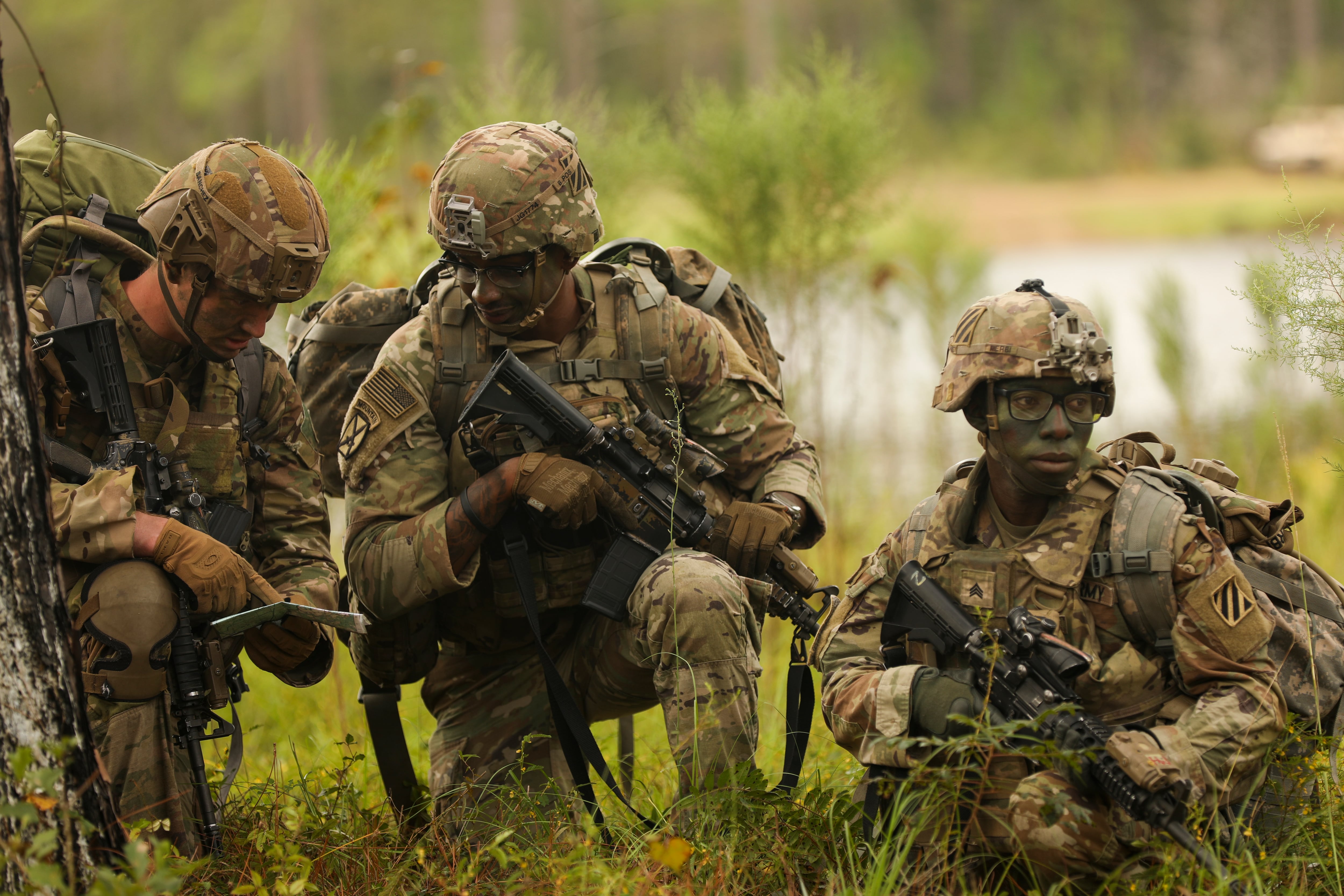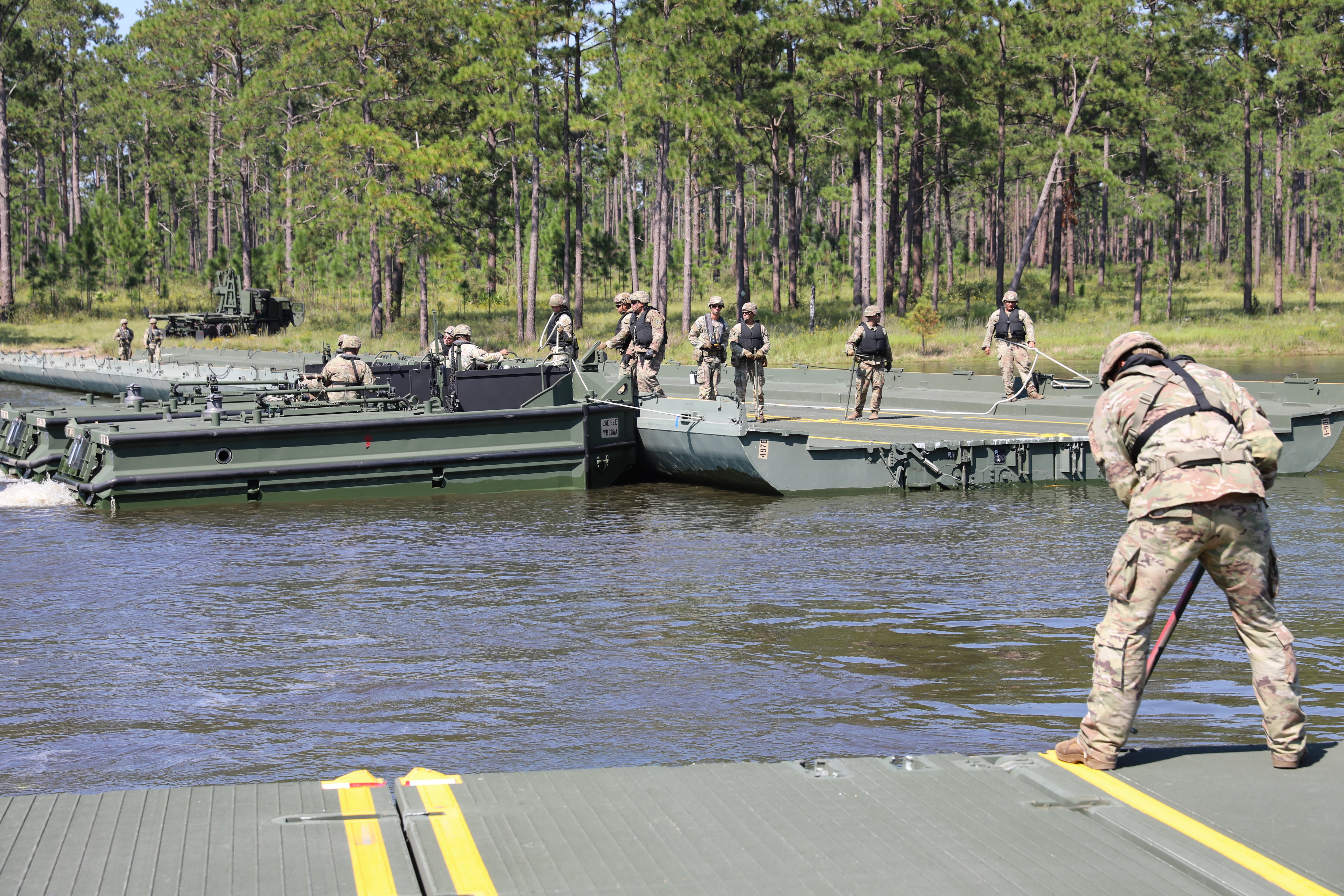Engineers with the 18th Airborne Corps based at Fort Stewart, Georgia teamed up with 3rd Infantry Division tankers there to complete a complex crossing exercise on Sept. 21. The once-routine training carries a stark urgency after a battalion of Russian armor was destroyed last year trying to do the same in Ukraine.
The troops of the 92nd Engineer Battalion’s 497th Multi-Role Bridge Company successfully helped a Bradley Fighting Vehicle carrying cavalry scouts and a M1A2 SEPV3 Abrams tank from 3rd Battalion, 69th Armor cross a water obstacle at the south Georgia post, according to a press release and division officials. Division officials noted the exercise was the first time the SEPV3 Abrams model — which will remain the Army’s most modern tank until the new M1E3 model enters service in the early 2030s — had crossed a water obstacle at an East Coast base.

Wet gap crossings, as they’re known in Army doctrine, allow mechanized units to cross bodies of water using temporary bridges assembled by engineer troops. That allows units to avoid existing bridges, which often are heavily fortified and rigged for destruction.
When contested, wet gap crossings can become bloody affairs — at least 400 Russian soldiers were killed in May 2022 when they tried and failed to attack over the Siversky Donets river in eastern Ukraine. The defenders repeatedly counterattacked the bridgehead and destroyed four Russian pontoon bridges, according to the New York Times, using artillery and floating mines that Ukrainians placed in the river upstream (in friendly territory) to be carried by the current to the bridge.

The company’s commander, Capt. Joseph Whitley, stressed the importance of “sets and reps” on the complex maneuver in a statement accompanying the release. “This is something that this company specifically trains on and we’re really good at it.”
And those repetitions will be important should the Army find itself fighting in Europe or East Asia anytime soon — the continents are crisscrossed with rivers that required numerous wet gap crossing operations throughout World War II.
Davis Winkie covers the Army for Military Times. He studied history at Vanderbilt and UNC-Chapel Hill, and served five years in the Army Guard. His investigations earned the Society of Professional Journalists' 2023 Sunshine Award and consecutive Military Reporters and Editors honors, among others. Davis was also a 2022 Livingston Awards finalist.




